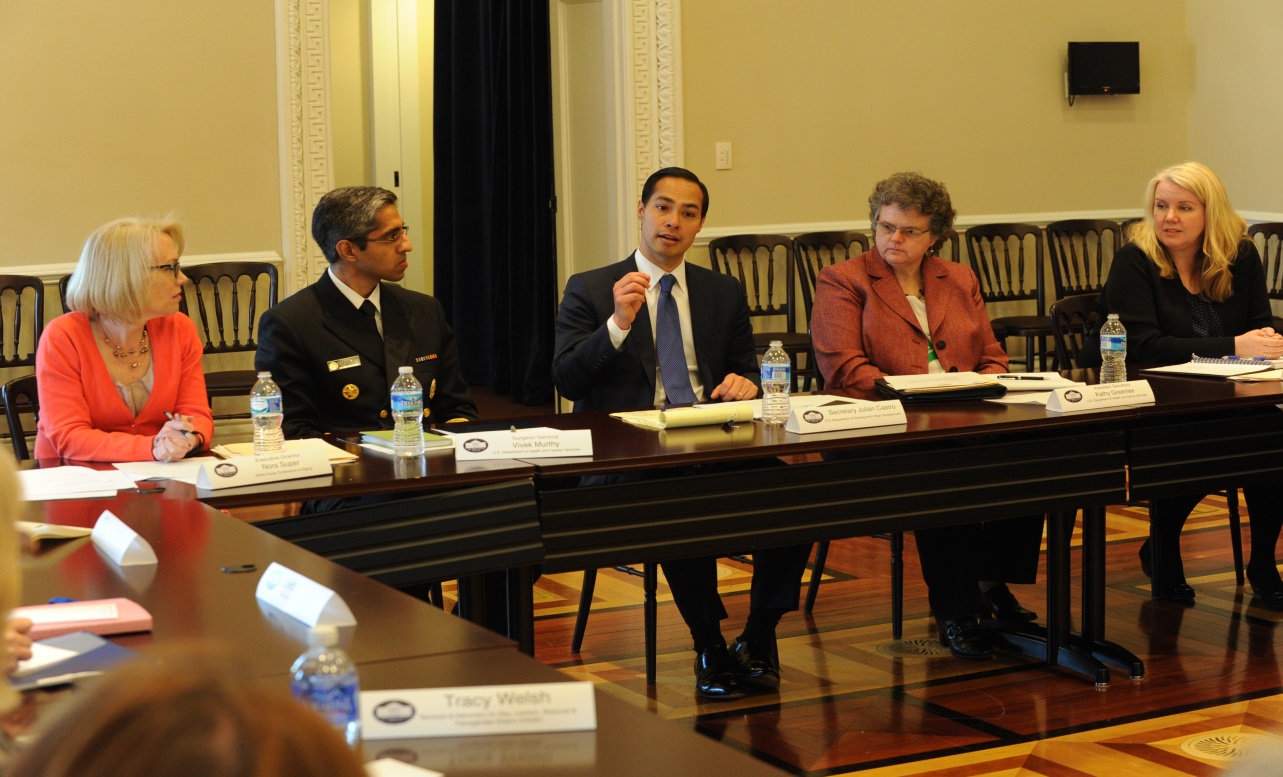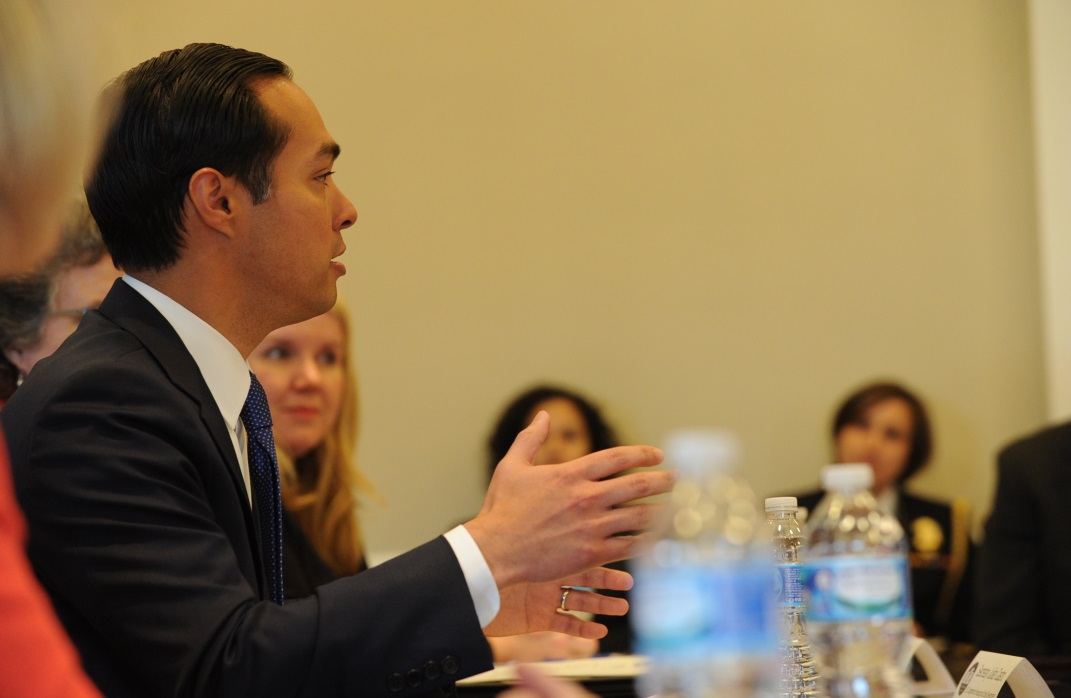Last week, U.S. Department of Housing and Urban Development (HUD) Secretary Julián Castro, U.S. Surgeon General Vivek Murthy, U.S. Department of Health and Human Services’ (HHS) Assistant Secretary for Aging Kathy Greenlee, and I hosted a listening session at the White House with experts in aging, housing, and health care to hear their ideas and insights about opportunities to help older adults remain healthy and active in their communities.
Session participants urged us to break down the silos between housing, transportation, health care, and long-term services and supports. They also shared wonderful examples of communities—such as Boston and Reno—who’ve come together to address these issues with a multifaceted, multidiscipline approach, recognizing that healthy aging takes place in communities where older adults can be active, find affordable and appropriate housing, and access needed health and social services.
 From left to right: WHCOA Executive Director Nora Super, U.S. Surgeon General Vivek Murthy, HUD Secretary Julian Castro, Asst. Secretary for Aging Kathy Greenlee, and Carole Johnson, Senior Advisor, Domestic Policy Council
From left to right: WHCOA Executive Director Nora Super, U.S. Surgeon General Vivek Murthy, HUD Secretary Julian Castro, Asst. Secretary for Aging Kathy Greenlee, and Carole Johnson, Senior Advisor, Domestic Policy Council
Secretary Castro reminded us that quality housing and strong communities are essential to ensure that all older Americans are able to choose their own destiny and find the home and neighborhood that is best for them. Surgeon General Murthy recalled an older patient he had treated who had been struggling with diabetes and obesity for many years. The patient was continually told to exercise, lose weight, and eat well. Unfortunately, it was too dangerous to walk in her community, and the only local store offering food was a 7-Eleven. As the Surgeon General noted, “the biggest lever for health is the community.”
Knowing that healthy aging is especially reliant on communities that provide appropriate housing and transportation options, the
President’s 2016 Budget requests funding to support housing for very low-income elderly households, including the frail elderly, to allow seniors to age in a stable environment and help them access human services. This request includes $10 million in new investments to expand a project that we hope will tell us more about the relationship between service coordinators and housing.
The Department of Housing and Urban Development’s website also has a section on
“Information for Senior Citizens” that offers information on housing assistance opportunities for older adults.

HUD Secretary Julian
Castro addresses participants at Housing and Healthy Aging Listening Session
Additionally, its
Service Coordinator Program provides funds for coordinators in assisted apartment housing to ensure that older residents, especially those who are frail or at risk, are linked to the specific support services they need to continue to live independently in that housing development.
Through the
Partnership for Sustainable Communities, the Department of Housing and Urban Development, the Department of Transportation, and the Environmental Protection Agency, are helping communities nationwide improve access to affordable housing, increase transportation options, and lower transportation costs while protecting the environment.
The National Institutes of Health also continues to support collaborative research to find ways to help seniors age in place and to remain healthy.
Encouraging all of us to engage in healthy behaviors, having the right housing options to allow older adults to live as independently as possible, and helping to ensure access to health care, services, and social supports, are necessary elements in any formula for healthy aging—and we'll continue to examine these issues as part of the 2015 White House Conference on Aging.
Thank you for your interest in commenting on this blog. At this time, we are no longer accepting comments. If you are still interested in sharing your thoughts, please e-mail them to
info@whaging.gov.